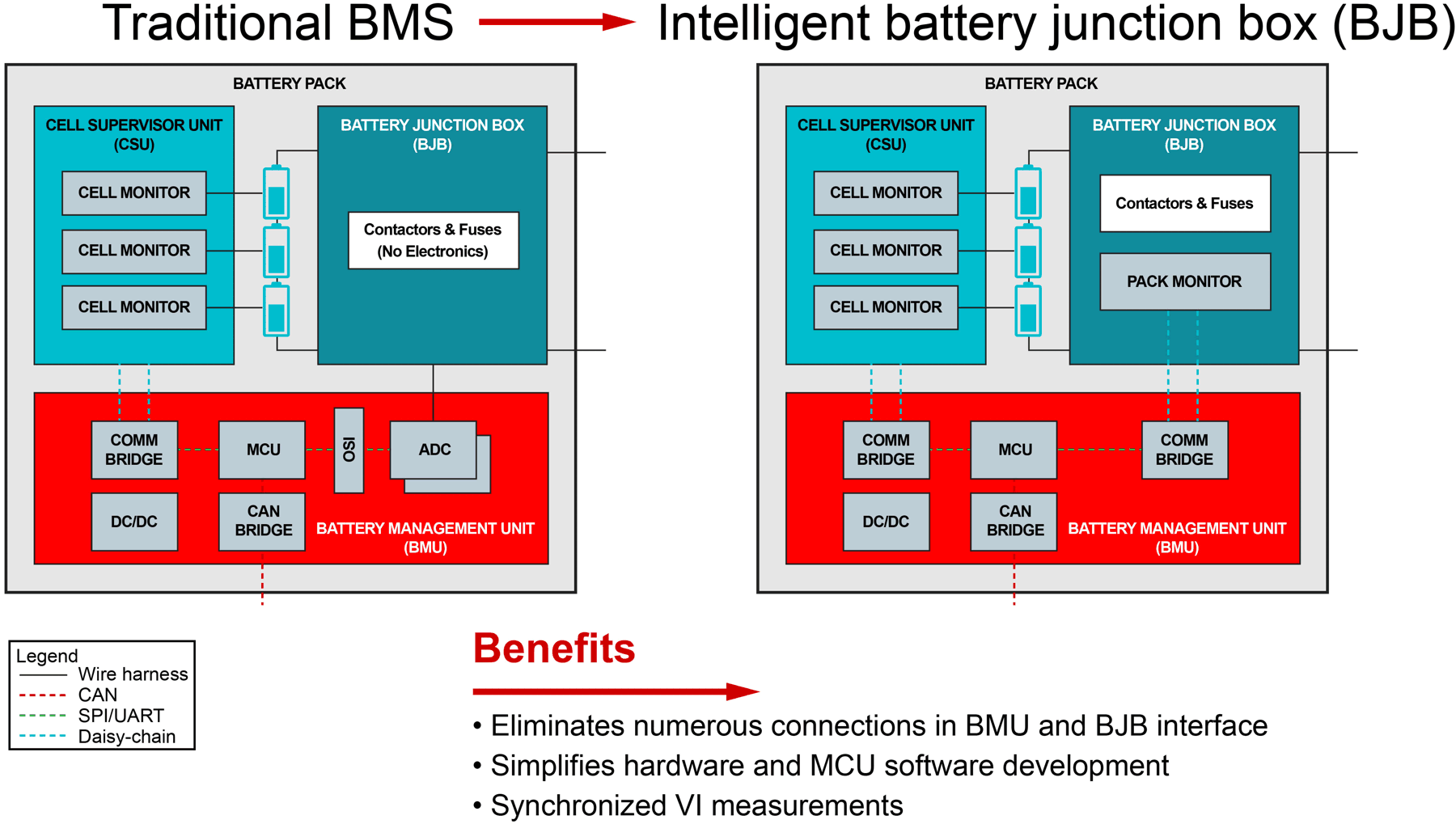SLYY218 December 2022 BQ79731-Q1
- At a glance
- Authors
- 3
- The working principle of a BMS and industry trends
- New battery chemistries
- Wireless BMS
- Advanced estimations of battery capacity and battery health
- A detailed look at the cell supervisor unit (CSU)
- Traditional vs. intelligent battery junction box (BJB)
- A detailed look at the BJB
- A detailed look at the battery control unit (BCU)
- Creating a complete battery test environment ecosystem
- Conclusion
- Additional resource
Traditional vs. intelligent battery junction box (BJB)
BMS architectures are continuously evolving. Silicon innovations (spurred by the arrival of a so-called pack monitor) are enabling a shift toward a more modern architecture known as the intelligent battery junction box (BJB). Whereas a traditional BJB contains only mechanical components, an intelligent BJB introduces active silicon devices into the BJB itself, performing high-voltage monitoring, current sensing and insulation detection (functions traditionally performed by the BCU).
An intelligent BJB architecture (illustrated in Figure 5) has several clear advantages. It clearly separates the high- and low-voltage domains – all high-voltage signals are measured directly in the BJB, allowing the BCU to become a fully low-voltage design. The pack monitor’s use of a proprietary daisy-chain interface eliminates costly digital isolator devices because the daisy chain enables discrete capacitor isolation. Daisy-chain communication also comes with the added advantage of not requiring any other components such as transceivers (like CAN), nor do they require an additional MCU to control and drive the communication protocol. Placing the pack monitor in or around the BJB makes high-voltage signals immediately accessible, and there is no longer a need to run multiple long wires back to the BCU. It is possible to measure currents and to perform shunt current sensing.
 Figure 5 A traditional BMS architecture
vs. a modern intelligent BJB architecture.
Figure 5 A traditional BMS architecture
vs. a modern intelligent BJB architecture.